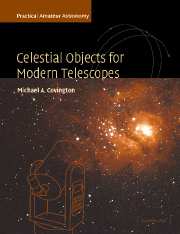C - Julian date, 2001–2015
Published online by Cambridge University Press: 22 September 2009
Summary
The Julian date (JD) is the number of days elapsed since noon UT on January 1 of 4713 B.C. It is the standard way of giving the date and time of variable star observations and is also used in astronomy for other purposes.
The Julian date system was introduced in 1582 by Joseph Justus Scaliger, who named it in honor of his father Julius Scaliger; it has nothing to do with the Julian calendar of Julius Caesar. The starting date in 4713 B.C. was chosen for easy conversion between several ancient calendars.
Note that the Julian day begins at noon, not midnight. Astronomers also use the modified Julian date (MJD), which is the JD minus 2 400 000.5. The MJD day begins at midnight.
AAVSO publications also use the JD minus 2 400 000, ignoring the 0.5. With long-period variables, this makes little difference.
Table C.1 gives the MJD for 0:00 UT on the “zeroth” day of every month (i.e., last day of the previous month) from 2001 to 2020, with instructions for computing the JD.
The AAVSO publishes a calendar giving the Julian date for each day (including an online version at http://www.aavso.org), and most if not all computer sky chart programs give the Julian date.
- Type
- Chapter
- Information
- Celestial Objects for Modern TelescopesPractical Amateur Astronomy Volume 2, pp. 252 - 254Publisher: Cambridge University PressPrint publication year: 2002

